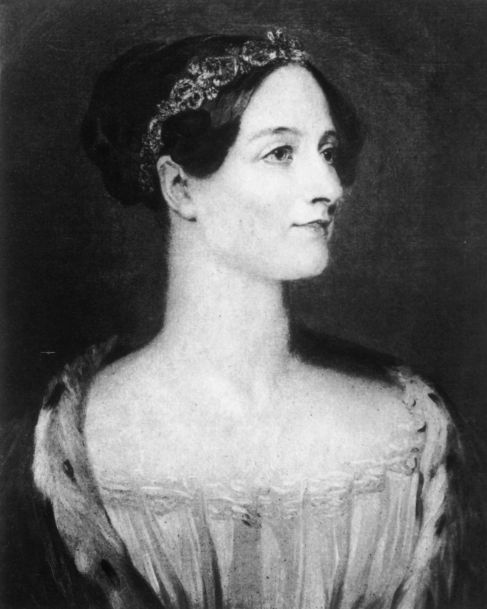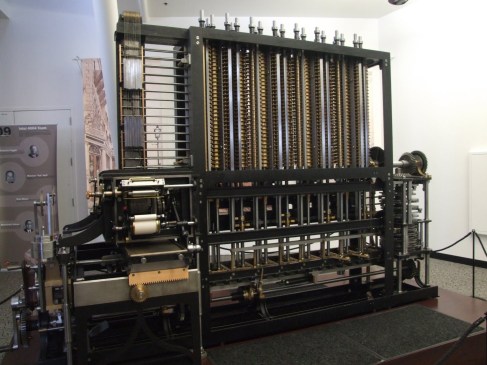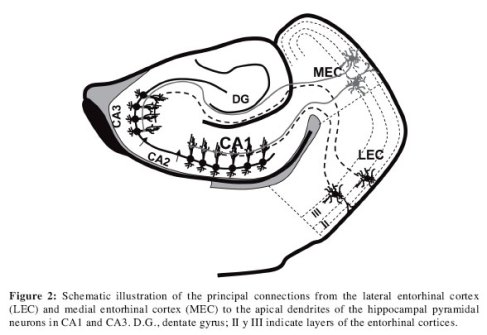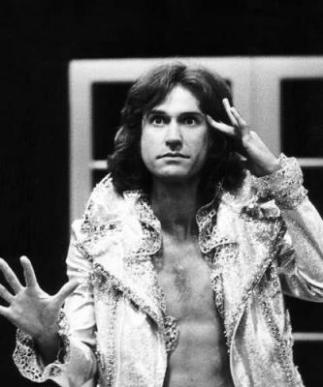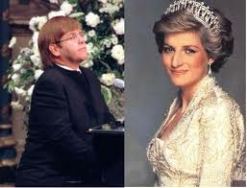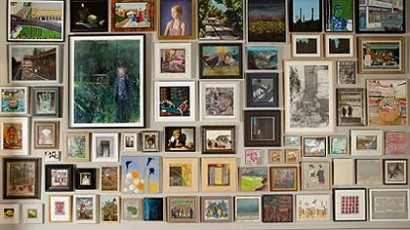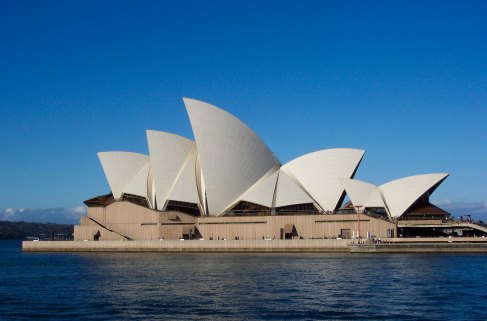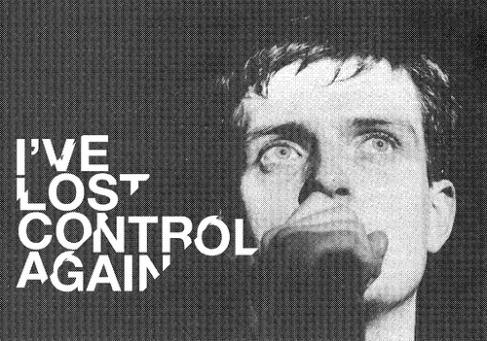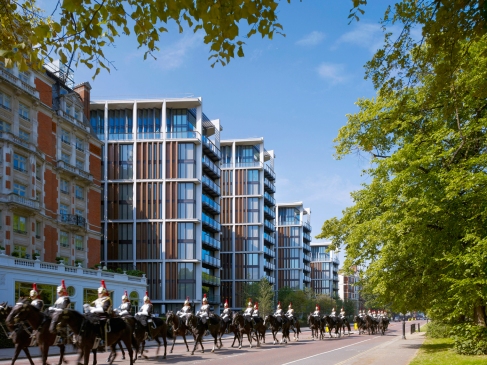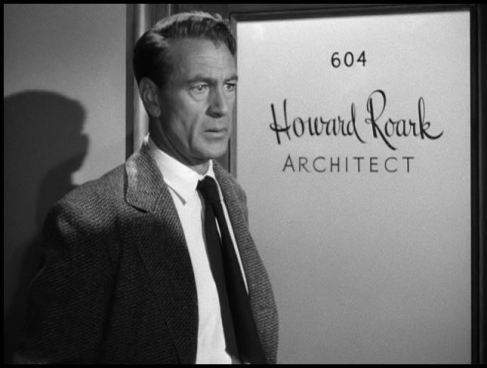The Soft Machine
“The World Began in Eden and Ended in Los Angeles”
Phil Ochs. American protest singer
“Computers are magnificent tools for the realization of our dreams, but no machine can replace the human spark of spirit, compassion, love, and understanding”
Louis Gerstner
The title The Soft Machine is a name for the human body in William Burrough’s 1961 novel of the same name; the theme of the book concerns how control mechanisms invade the body and the brain.
The Soft Machine in this text encapsulates the dilemma of a twenty-first century architect, assailed by contrasting pressures:
On one side the prominent and fashionable “icons” of contemporary architecture driven by plug and play software programmes promote American Idol type glamor and glitz that bewilder the eye and imagination….whilst outwardly stunning this architecture is often inwardly barren, form driven without social and cultural credibility serving to only to exalt style, over substance.
Should the architect let the machine create the empty vessel or choose to kick the need of the algorithmic fix?
I’m waiting for the man, twenty-six dollars in my hand
Lou Reed
Should the architect place trust in their own soft machine, human software controlling man made mechanisms for a brighter future?
“Computers make excellent and efficient servants, but I have no wish to serve under them”
Mr Spock
Erstwhile science officer of the Starship Enterprise
Augusta Ada Byron was born in December 1815, daughter to the romantic English poet and essayist Lord George Byron; from an early age Augusta displayed a gift for mathematics. She is renowned for her work in assisting Charles Babbage on the development of the first encoded algorithm for Babbage’s Difference Engine, the world’s first computer; Augusta’s algorithmic equations defining the parameters between a sequence of numbers was in effect the first parametric equation, the first connection between creative thought saturated with dreams of mathematics and information as processed by a machine.
It took sometime but mathematical mapping, the process of creating parametric forms is taking over the way that architecture is conceived and produced. I find this a worrying trend as the initial visioning of a project is an act of creation. It is the use of the creative part of the mind; you could say it is a metaphysical act. This is not an intellectual or mathematical process, it is not about inputting data to achieve a mechanical result in the spirit of Byron’s daughter Ada, it is reflex action of the Hippocampus, a part of the brain that deals with the consolidation and retrieval of knowledge, the soft manifestation of the intellect, a synaptic search through the brains lexicon of things that have inspired, that have created a memory of a sensation, a feeling of a space, a shocking colour or a rough texture. It is also about putting aside what is known, forgetting constraints freeing the mind to seek the opportunity, to dream the dream of possibilities.
The mind is the source of the creative idea, not the computer.
It would seem from the students we interview and sometimes employ that their schools of architecture do not teach them how to draw basic plans and sections let alone how to conceive the cityscape or an understanding of the human figure and scale. The meaningful effects of light and shade as beloved by the architectural great Louis Kahn do not feature on the curriculum. These are all necessary skills that train the hand and the eye, and which teach architects to observe things more interesting than themselves and their interaction with a keyboard and screen. Rhino and Grasshopper are the lingua franca and a perceived solution to any problem sans contexte. It would seem that computing and the prevalence to all things parametric has replaced the cultural connect of creation with an indecipherable archi-speak that is manufactured to sell whatever piece of outer space junk sculpture that leaves the hard drive for the 3 dimensional printer. The followers of fashion lack the subtlety of those that truly exercise artistic control over the algorithmic process and who are able to create works of mesmerising beauty.
They seek him here, they seek him there,
His clothes are loud, but never square.
It will make or break him so he’s got to buy the best,
‘Cause he’s a dedicated follower of fashion.
He thinks he is a flower to be looked at,
And when he pulls his frilly nylon panties right up tight,
He feels a dedicated follower of fashion.
Ray Davies. The Kinks 1966
The real victim of this trend driven evolutionary architecture is the city, adopted techniques produce a formal complexity that becomes the raisond’être, a belief, a primary consideration that is misplaced. The fact that these forms often do not follow or serve any functional or structural requirement raises a number of questions, should the complexity of buildings be increased if there is no programmatic or structural requirement, are the solutions proffered truly sustainable and is this architecture a reflection on the environment and the requirements of everyday life? The use of form generational tools does not produce architecture but rather abstract shapes which should be confined to the conceptual world or used as a step in the testing process of discovering the design solution as they are not an end in themselves.
Architecture needs to be connected; intellectually and practically sharing common concerns and influences, the city is the canvas where these concerns are expressed.
This is not an advocacy for a painterly approach to architecture, of nostalgia, or a summoning of an imagined past; this is not a William Morris Pre-Raphaelite dream of turning back the clock towards some medieval idyll, we work and live in the forever now or never, the digital life stream and our cities are the fertile ground where cultural metaphors are planted and grown, contorting in a tropic dance towards the eternal sunshine of society zeitgeist. Opportunities to grasp the stem of Jack’s beanstalk and take the ride upwards have in the past been sadly lost, witness ABK’s loss of the National Gallery Extension because of the comments of the heir to the British throne and Zaha’s loss of the Cardiff Bay Opera House competition because of the clarion call of the donkeys of the Welsh press, notions of evolutionary architecture do not always sit well in a society where the manipulative press montaging of the views of the Hoi polloi are out of control, witness the hysteria and hypocrisy of the world press surrounding the death of Diana Princess of Wales as we all sang along tearfully to Elton John’s Good-bye England’s Rose.
We have witnessed the “machine for living in” and the “asphalt jungle” and are now faced with the current predilection for the parametrically resolved organic metaphor that has eco positive connotations and a contrived relationship between man and his environment in the vain hope of winning Vitruvius’s stamp of approval in the remastered digital version reissue of his book De Architectura.
The Oracle of Delphi was one of the most influential figures in ancient Greece. The human mistress of the god Apollo, she had the power to enter into ecstatic communion with him and respond to the questions of citizens, foreigners, kings, and philosophers on issues of political impact, war, duty, crime, law and personal issues
A visitor once asked the Oracle: “If, in time, all the planks on a boat had been replaced, would it still be the same boat?” To the boat’s owner who had witnessed its evolution, the answer would be “yes”. The boat is not merely the sum of its components, but also something else, much more interesting: it is the relationships between the planks.
Influences on the architect are generally predicated on economic and cultural milieu, the ramifications of world economics and the vacuum formed by postmodernism has engendered works that are visually breath-taking but often result in social ossification. The visual bias in the training of architects towards computer and programming skills needs to be re-orientated towards one that stresses the social and economic consequences of design, then perhaps the potential contributions proffered by the algorithmic tool can be better focused rather than dropping the result of an equation into a city block only then to find out the true values of X and Y once the mortar has set.
Globalization has resulted in buildings and cities conforming to an almost universal design that appears the same in London, Shanghai, Dallas or Singapore. Contemporary architecture has acquiesced almost without protest towards homogeneity, it is accepted as inevitable that ephemerality and fragmentation take precedence over truth. Explanations have shifted from the realm of the material towards a consideration of abstract aesthetics.
Is this a portent of mental crumbling, a postmodern waking nightmare of incoherent conflicting realities or a search for new values beyond the pure ethos of the Modern Movement. The expression of architecture as a reflection of today’s society is caught in turmoil; the capitalistic clients of the socialist east are still devouring monster icons that are thinly veiled in their “green marks” and “platinum certificates” captured in perpetuity for the History Channel because the building has a wind turbine. Only the American architect Steven Holl is getting it right, extraordinary architecture underpinned by a fundamental belief in his own creative ability, and with an arrogance that drives through his message of sustainable linked hybrids that manage avoid the project brand names that his clients try to foist upon him. The recent Pritker Prize laureate Chinese architect Wang Shu is one of the only guys out there bucking the trend and is the antithesis of the East’s rush towards urbanistaion, his considered almost Corbusian artisanal works are a refreshing antidote to that of the clamour of commercial architects who have arrived the east in their droves peddling the packaged products they could not get built at home.
It has been written that some architectural forms are too advanced and incompatible with present society such that the individual cannot grasp the forms that represent modern space; designs are “too futuristic” that people cannot find correspondence with such an experience of advanced forms in their own lives. The Guggenheim in Bilbao is an example of city icon where the architect has mutated the space to such an extent that the created hyper-real space has surpassed the ability of the individual to orientate itself in relation to its form. Is this good architecture or a manifestation of the architect as an abstract sculptor of space, a no rules approach to the making of something that has no budget, no real brief, a willful self-reverential exercise on the part of the architect or city making? The treatise behind the Guangzhou Opera House is an attempt to equalise architecture with biology, both are materially and organisationally based and both are concerned with morphology and structuring, nevertheless the similarities do not lead to the perception of this building as a living and breathing artificial life form and the story is not sufficiently lucid story to support the why and how the project came into being. The badly built but magical spaces have an extraordinary quality that I want to believe is more to do with the creative genius of Zaha than the button pressing of her cohorts. I was once a fan of her El Lissitzky inspired canvases, there seemed to be more intent, more connection between the creative mind and where her hand was to eventually touch the earth, all that seems to have long gone in the quest to follow the “look book” world of the Lagerfeldt fashionistas.
Cities needs their iconic opera houses and art galleries but cities cannot be solely composed of competing egos, cities need to support variation in style the apogee of a grand exhibition, a vernissage of the Royal Academy Summer Exhibition where the pretentious sits alongside the down to earth, where the grand hangs out with the humble.
The reality of an architecture solely based on the play of the algorithmic equation is no better than a re-emergence of the Memphis brand of Postmodernist ornamentalism without Sottsass’s sense of irony epitomised by the flim flam of the Michael Graves decorated Portland box.
The branded label may sell the 60m2 rabbit hutch for an inflated price but style is no substitute for the ability to put the column in the right place.
Like it or not we in a place where aesthetic is celebrated for its own sake, delighting in glamorous and adventurous forms that are extravagant and non-orthogonal, over complicated just because they can now be computed and analysed. As celebrity architects create increasingly fantastical shapes Urtzon’s Sydney Opera House and Gaudi’s Casa Batlló remain God’s own, commanding a sense of wonderment as they were conceived and engineered with a control over fractal structures without the resource of artificial intelligence.
No better than the faceless commercial postmodernism of Los Angeles the whimsy of architecture solely driven by emergent technology is vulgar, decadent, self-serving and socially irresponsible.
Architecture has never been a rule-driven science serving just the function of social building as the modernists would have had us believe. The living city that engages all the senses is the very opposite of the urban ideal of the modernist Corbusian Villle Radiuese a functional rational environment and an insane suffocating utopia.
It would seem that in 1935 Corbusier forgot that the city also deals with cultural, social and aesthetical notions. Today these notions may be somewhat more sophisticated and require more complicated functional and social programs to support daily activity so perhaps there is a need to create more innovative architecturally responsive forms to assuage the demand.
Is the algorithmic architect absorbed in a hyper society that has problems that cannot be resolved using conventional design methods? What is wrong with “traditional” problem solving creativity through intuitive play and artistic sensitivity? The mechanistic determinism of Ada’s algorithms are a distant and anonymous, nonhuman process if they are not applied to real context.
Does any problem surpass the design team’s ability to thoroughly comprehend it? Remember Gaudi and his catenary curves, his tools for resolving a particular problem were loops of ropes when he pioneered the parabolic arch, experimental design as a necessity of a practical architecture.
Often problems emerge where the required solutions are unknown, sophisticated modeling programs then have a use in aiding the search for a solution which is spontaneous, sometimes accidental but if the solution is the sole driver of the architecture divorced from social and cultural concerns then this I believe this is an abdication of the architects’ throne in order to marry a mechanical Wallis. Forever to be outcast from one’s heritage, Stanley Baldwin whispering in your ear “Sorry your majesty but your off to live out of sight on distant a Caribbean island, you can have your Wallis but she will never be HRH”
Confusion in her eyes that says it all.
She’s lost control.
And she’s clinging to the nearest passer by,
She’s lost control.
She’s lost control. Joy Division 1979.
“There is a divinity that shapes our will. Man cannot change this fortune. What is lotted cannot be blotted or avoided”
William Shakespeare. The Bard of  Avon
Avon
New problems require new solutions but it behooves us to keep one eye on the past as we venture into the future, whatever the shape or form of the design solution the lived city is three-dimensional and a product of the urban traces left by the touch of weather, people and history. New can and should exist cheek by jowl with the old but there is the odd rule even if anything is buildable these days.
In the Renaissance cultural buildings of note were built almost leaning against other buildings, they took one by surprise as you turned a corner, their main facade looked into the piazza and seen from distance they dominated narrow streets and blocked views. Cities over time have “improved” the view of these buildings by demolishing the buildings that touched them, clearing the space. By converting them into free-standing buildings, they isolated them from their urban fabric losing forever the fact that there was never an intended full-view of them from within the city, the play of plural and contradictory perspective has been misunderstood and lost forever, isolated icons out of context are not happy icons.
Richard Rogers’ Lloyds Building a monument to the financial hedonism of the1980’s is a rare example of a wonderful building that absorbs and makes better its city context, distance and fragmented views from the streets around Leadenhall Market make this building a great addition to the city fabric, a willful iconic piece of architecture very different from its neighbours but a real urban success story.
The Lloyd’s building acknowledges that the city is not a map, but a three-dimensional lived / worked in space, it measures itself by immersing its shapely mass with the street. The pulse of the Lloyd’s building and its interaction with the city is perceived by watching the pedestrian movements around its edges and vertically up the stainless steel façade in the all glass Otis lifts, a futuristic ballet worthy of frame or two in the 1982 movie Koyaanisqatsi: Life Out of Balance, directed by Godfrey Reggio with music composed by Philip Glass. The tone of the movie is set by the juxtaposition of images and music and depicts different aspects of the relationship between humans, nature, technology and the city, the traffic and the people are the blood that pulse through the city arteries.
However, Lord Rodgers more recent advocacy of the building of many more sky scrapers in the City of London has fallen on the deaf ears of the chief city planner Peter Rees, although I support the Lord of High Tech’s ideas on urban densification more towers in the city are off beam. London is a medieval city without a master plan; it has grown through accretion and in spite of appearances does not succumb to chaos because of its lack of boulevard grid. London has another order, a rhythm of the street that gives London its idiosyncratic quality, this would be undermined by the advent of too many towers occupying the horizon; mapping the city vertically removing forever the opportunity to get lost through the city cracks.
More towers which are inherently unfriendly, lack any proportion and scale with London’s urban realm, and cannot be grasped or easily understood as part of the urban fabric, they are not concerned as Lloyd’s Building is with the street.
Lord Rogers can afford his Champagne Socialist views and as a native Italian with has feet in opposing camps as he often extolls the human scale of the historical urban centres of old cities with narrow, winding streets, and inner courtyards that protect one from the heat and transform urban realm into half-closed half-open space.
He aptly used the lesson at Lloyds, but perhaps his memory is failing? His ideas of dense mass tower living and working sitting atop a transportation hub with a factored percentage (but not too much) key worker housing in a gated, confident self-expression of enhanced identity is a mere stone throw away from the commercial Chinese developers who offer condominiums to the market under the brand image of “Rich Gate”, perhaps this is why his much lauded One Hyde Park its privileged luxury and ideas of good taste are the toast of the world’s oligarchy?
To sum up
The tactile perception of the city is multi-layered, it is inseparable from movement as a condition for experiencing the three dimensions of the urban space. The continuous process of experiencing the city effects its narrative, the true meaning of the soul of a city is the sum of its stories.
Stories about icons, about social housing and everything in-between.
Architecture is process of creating artifacts with numerous meanings, their form cannot be subjected to Darwin’s definition of evolution they are not part of nature, even though they now may be growing and sensitively planted by Patrick Blanc.
Nature may be a source of inspiration and who could argue that going to work in garden would not be a good idea?
There is no doubt that living breathing abstract shapes of the conceptual world will be implemented in the future, illuminating a long and winding path towards a different organic formal expression.
The architect will not be replaced by sophisticated modeling techniques, they are just another instrument in the architect’s tool box to be used for invention and discovery, using digital technology without functional, topological and social thinking needs to remain on the magazine page.
One thing that will never change is architecture’s trajectory, propelled by dissatisfaction with earlier idioms; what some term their Eureka moment from an obscure past , serves only to boast their individual creativity supported by an incomprehensible manifesto that demands that you should design and behave like them.
Ayn Rand’s hero Howard Roark’s steps once more onto the ball plate, standing tall, bat in hand all uncompromising and heroic, fortunately three balls and he’s struck out. Trends unlike a rookie batsman take a while to die out.
Darwin might have replaced God with his ideas of natural selection but technical evolution will not replace the human sensibility, no matter how fast or big your Cray Supercomputer is.
Architects are the heart of the machine
“Perfection is achieved not when there is nothing left to add, but when there is nothing left to take away.”
Antoine de Saint-Exupéry
Message
IBM has recently won a $4.9 million government grant to begin the first phase of research on “cognitive computing” essentially building computers that work like living brains. The new brain-like computers will process vast amounts of data to solve problems without relying on specific programmed algorithms.
The insides of computers look like neural networks, a road map of electronic circuits. The brain works by constantly creating, breaking, and tweaking the synaptic connections between neurons. Although today’s computers may excel at complex challenges with clear rules, like chess, they fail at simple tasks that require strategy, sensation, perception, and learning,
Free from the constraints of explicitly programmed function, computers could gather together disparate information, weigh it based on experience, form memory independently and arguably begin to solve problems in a way that has so far been the preserve of what we call “creative thinking”
Neuroscience has discovered the biological processes underlying simple brain function.
Supercomputing has enabled technology to match the complexity of the brain.
Nanotechnology has made it possible to create simulated synapses, the very element of the brain that enables it to work at speeds and efficiencies computer scientists have so far only dreamed of.
Scientists have already created computers that rival the mental abilities of rats.

